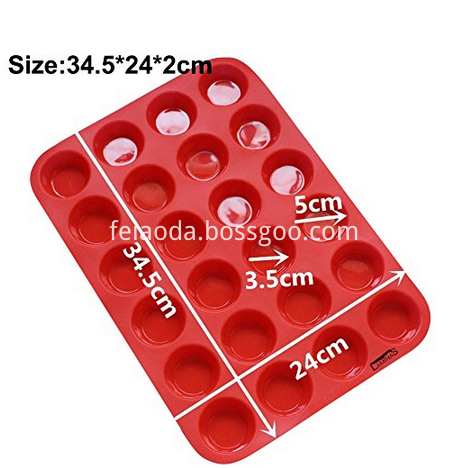Condiments are accessories in food and beverage cooking. It is impossible to have a one-off consumption as much as rice noodles. Therefore, there are some special requirements for condiment packaging, including repeated sealing, light protection, stability, and so on.
1, soy sauce, vinegar packaging
Soy sauce and vinegar can be regarded as representatives of liquid seasonings. There are many kinds of seasonings such as cooking wine and seasoning oil. In the planned economy, glass bottles were once packaged with soy sauce and vinegar. It can be said that liquid condiments are still one of the last few positions in glass containers. Glass bottles do have their advantages: transparency, good barrier properties, low price, and ease of reuse.
In recent years, the situation has undergone great changes. The pattern of dominating the glass bottles has been broken. Plastic bags, PET bottles, and sunken buckets have entered the liquid condiment market one after another.
PET bottles are similar in size and capacity to glass bottles, but they are lighter and have better gloss than glass bottles, and have caps that can be used repeatedly. PE buckets have a large capacity and are suitable for occasions where consumption is relatively fast. The combination is also very good; and Xing bags provide better economics.
Although the glass bottle packaging still occupies a dominant position, it is worth mentioning that in the past, the single crown cap closure style on glass bottles has changed. It can be said that the imperfection of the crown cap is the fatal weakness of the glass bottle packaging. Many glass bottles have now been improved in terms of caps, and plastic caps have been used to facilitate their use. Some manufacturers also have a plastic benefit bottle hanging in the crown cap glass, so that after opening the crown cap can be replaced with this plastic cap repeatedly.
Small-capacity liquid seasonings such as mustard oil, chili oil and certain high-grade raw soy sauces are still mainly used for glass bottles. However, all plastic caps have been used. There is no ideal alternative packaging for this market.
2. Sugar and salt packaging
Sugar and salt have been used in bags for packaging, especially large-scale transport packaging. However, plastic bags are the main form of sales packaging. For a long time, there has been little change in the packaging specifications.
In recent years, there have been some changes in the types of salt. Some functional salt products such as iodized salt have entered the market and have gradually become mainstream. Salt packaging has increased the requirements for written instructions. The packaging also began to transform from a single plastic bag package, and carton packs began to appear.
Foreign salt product packaging has tended to carton packaging, which is also the direction of innovation in salt packaging in China.
Sugar packaging is still dominated by plastic bags, but the trend is clearly toward paper bag packaging. It is more in line with environmental protection requirements, is a trend of packaging; In addition, the functionality of paper has been unprecedented, can have high strength and good moisture resistance, printing, bag making technology has also made considerable progress.
At present, there seems to be no effort in the packaging design of sugar and salt, and the appearance is tedious. If there are some new packaging designs, consumers will easily accept it.
3, sauce packaging
The packaging of paste-like viscous articles is divided into two categories: bags and bottles. Low-grade sauces are packaged mainly in plastic bags. Some medium-to-high-end seasoning sauces such as chili sauce, tomato sauce, and various kinds of jams are all packed in glass bottles and are equipped with plastic caps to facilitate multiple opening and closing. Some sauces also have aluminum plastic sealing film to extend the shelf life. Shaped bottles mainly appear in some high-end sauce packaging, such as salad dressings. Small-size packaging sauces, such as ketchup used in fast-food restaurants, are basically aluminum-plastic composite packaging.
- MUFFIN PAN FOR BAKING - Up to 24 Mini Cupcakes or Mini Muffins at a time. Cater to your love for baking with this silicone muffin pan and make up to two dozens of muffins at a time. Serve at parties or enjoy delicious mini muffins with your family!
- ASTONISH YOUR GUESTS WITH BEAUTIFUL LOOKING MUFFINS because the whole muffin pops out quickly and easily! Super easy to clean when you are done. Dishwasher Safe.
- IMPROVE YOUR HEALTH- eliminate all of the GMOs, MSG, High Fructose Corn Syrup, Trans Fats, Sodium Nitrate/Nitrite, Food Dyes and other Chemicals found in store bought muffins and cupcakes, and make your own muffins. BPA Free!
- YOU WILL LOVE BAKING WITH THESE PANS!! They are a great gift idea for family and friends. The baking ideas are limitless beyond muffins and cupcakes; such as quiches, bacon and eggs, mini upside down cakes, cookie dough, brownie dough, frozen treats ... and many more. The colorful silicone also adds a splash of color to your kitchen and bake ware. Satisfaction guaranteed, or your money back.
- FDA FOOD GRADE Silicone Muffin Pans are completely dishwasher safe so cleaning is always quick, simple, and worry-free! The flexibility of silicone allows the pan to be folded without damage, it simply unfolds back to its initial shape.
Main feature:
Heat resistant up to 450° F and freezer safe.
Flexible for easy storage without losing it's shape.
Non stick for easy cleaning of burnt on food.
Dishwasher and microwave safe for a range of kitchen uses.
100% BPA free material construction.

24 Cups Silicone Muffin Pan,Muffin Top Pan,Large Muffin Pan,Small Muffin Pan
Shenzhen Feiaoda Technology Co.,Ltd , https://www.flysilicone.com